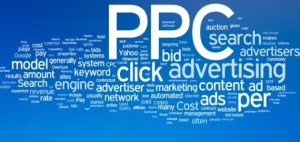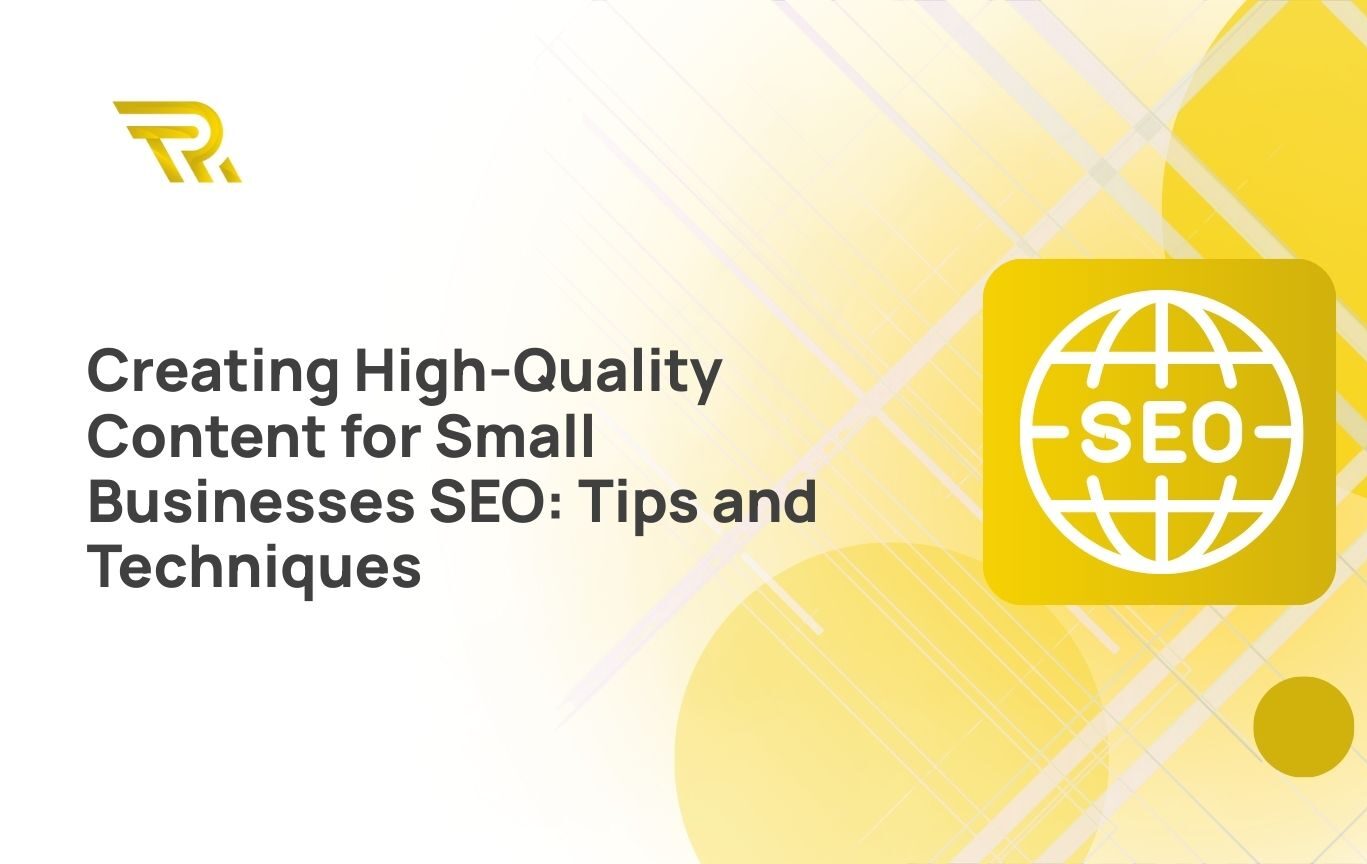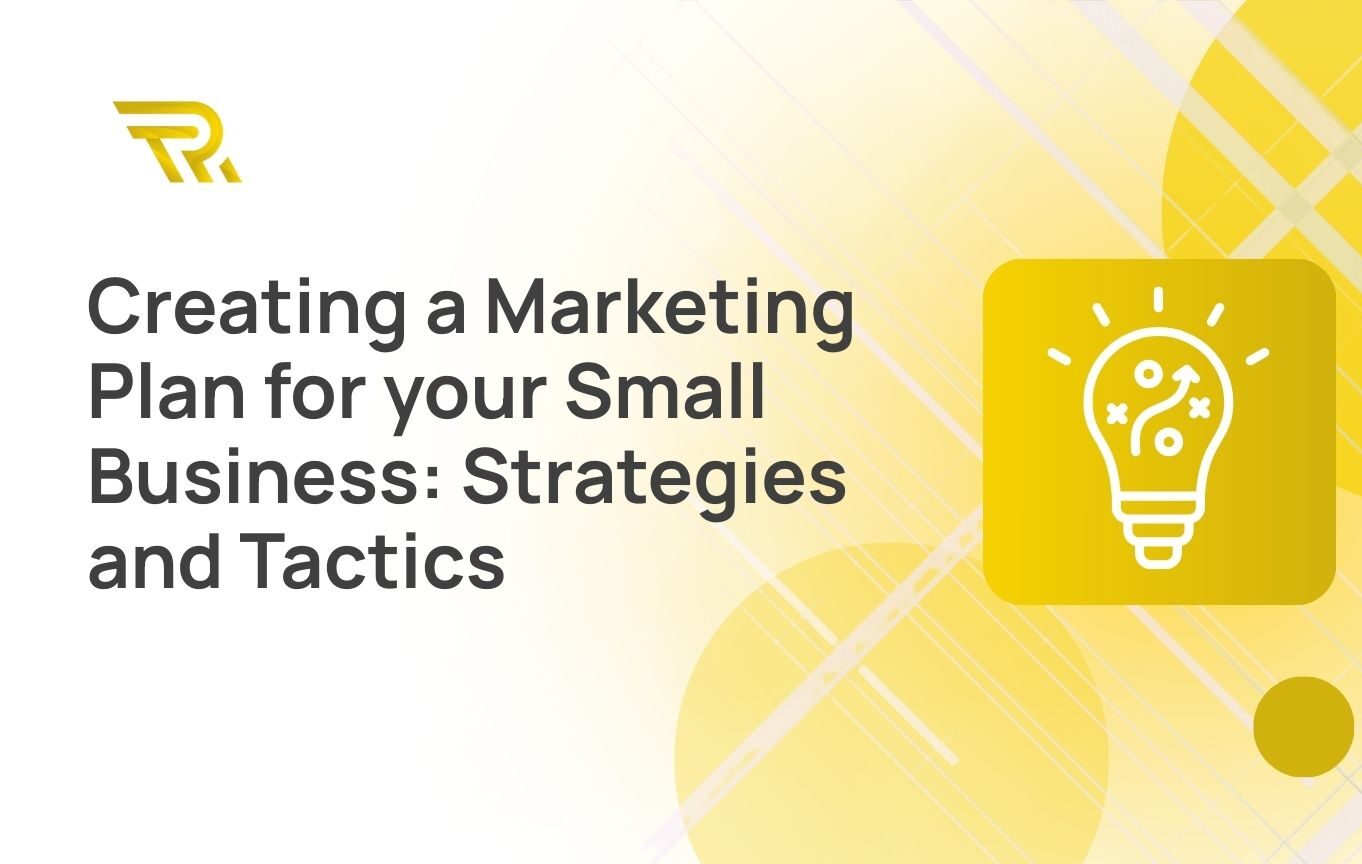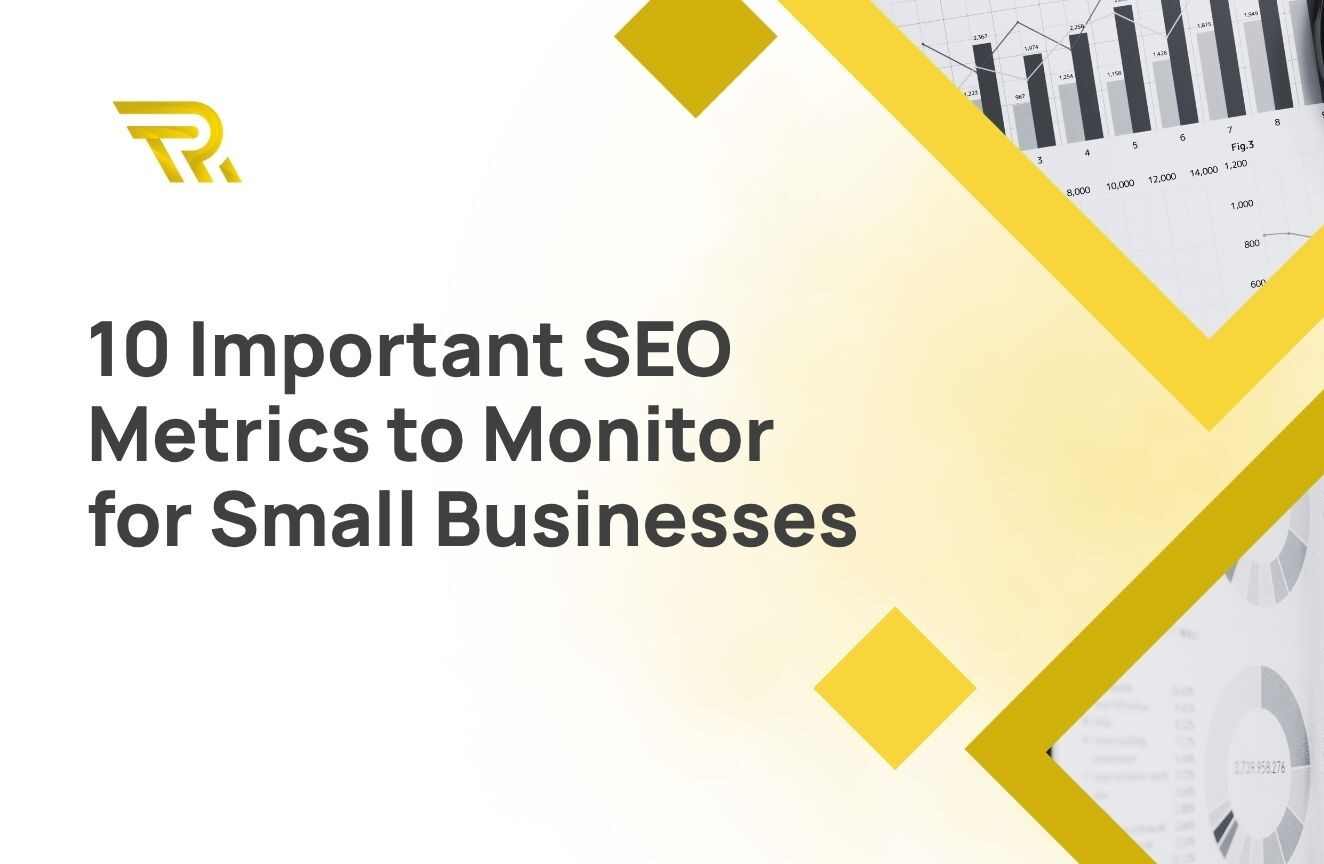
Are you dreaming of starting your own business in the USA? Being your own boss, setting your own schedule, and pursuing your passion can be an exciting and fulfilling venture. However, starting a small business can also be challenging, with many decisions to make and steps to take. In this article, we will provide you with a step-by-step guide on how to start a small business in the USA, covering everything from choosing the right business idea to managing your business effectively. So, let’s dive in!
Here are our key takeaways:
To start a successful business, several key steps need to be taken. It is essential to define a unique business idea that aligns with market demand.
Conduct thorough research to understand the target audience, competition, and market trends. Based on this, develop a comprehensive business plan that outlines your goals, strategies, and financial projections.
Consider the legal and operational aspects of your business. Choose the appropriate legal structure, such as a sole proprietorship or LLC, and ensure you register your business and obtain any necessary licenses and permits.
Choosing the Right Business
The first step in starting a small business is to identify the type of business you want to start. Consider your interests, skills, and experience to determine what kind of business you are passionate about and what aligns with your goals. Here are some popular business ideas to consider:
Local Business
If you prefer to serve customers in your local community, you may consider starting a local business. This could be a retail store, a restaurant, a beauty salon, a fitness studio, or any other type of business that caters to the needs of your local area. Local businesses can be a great option for those who want to be involved in their community and build strong relationships with customers.
E-commerce
With the rise of online shopping, starting an e-commerce business can be a lucrative option. You can sell products or services online, reaching customers all over the country or even internationally. This could involve creating an online store, selling on platforms like Amazon or Etsy, or offering digital products or services. When launching an e-commerce venture, mastering Shopify SEO is essential to maximize your online store’s visibility and reach potential customers worldwide.
Nationwide
If you have ambitions to scale your business beyond your local area, you may consider starting a nationwide business. This could involve franchising your business, expanding to multiple locations, or offering your products or services to customers across the country. This may require more planning and resources but can lead to significant growth opportunities.
International Business
For those who are interested in exploring global markets, starting an international business could be an option. This could involve importing or exporting products, setting up a global supply chain, or providing services to clients around the world. International business can be complex and may require additional research and understanding of international trade laws and regulations.
Once you have identified the type of business you want to start, it’s important to research your competitors and market to ensure that there is demand for your product or service and to gain insights on how to position your business for success.
Research Your Competitors and Market
Conducting thorough research on your competitors and market is crucial to understanding the landscape in which your business will operate. This research can help you identify your target audience, assess the demand for your product or service, and uncover any gaps or opportunities in the market. Here are three key subheadings to consider when conducting research on your competitors and market:
Primary Research
Primary research involves collecting data directly from your target market. This could include surveys, focus groups, interviews, or observations. Primary research allows you to gather first-hand information from potential customers, understand their needs, preferences, and pain points, and tailor your business strategy accordingly. It provides real-time insights and can help you identify consumer preferences, behaviors, and trends that can inform your marketing and sales strategies.
Secondary Research
Secondary research involves gathering data from existing sources such as market reports, industry publications, government statistics, or online databases. Secondary research provides valuable insights into market trends, competitor analysis, and customer behavior. It can also save you time and resources compared to conducting primary research. Secondary research can help you gather data on market size, competitor strategies, customer demographics, and industry trends, which can provide a comprehensive overview of the market and its potential opportunities.
Conduct a SWOT Analysis
A SWOT analysis is a strategic planning tool that can help you assess the strengths, weaknesses, opportunities, and threats of your business in relation to the competition and the market. It involves evaluating your business’s internal strengths and weaknesses, such as your unique selling proposition, competitive advantage, resources, and capabilities, as well as external opportunities and threats, such as market trends, competitor strategies, and regulatory changes. A SWOT analysis can provide valuable insights into your business’s current position in the market, highlight areas where you can leverage your strengths, address weaknesses, seize opportunities, and mitigate potential threats. It can serve as a foundation for developing your marketing, sales, and overall business strategies.
Writing a Business Plan for Your Small Business
Creating a comprehensive business plan is an essential step when starting a small business. A well-crafted business plan serves as a roadmap for your business, outlining your goals, strategies, and financial projections. Here are some actionable tips on how to write an effective business plan for your small business, along with an overview of the typical structure of a business plan:

- Start with an Executive Summary: The executive summary is the first section of your business plan and provides an overview of your business, including your mission statement, business concept, market opportunity, and financial projections. Keep it concise and compelling to capture the reader’s attention.
- Describe Your Business: Provide a detailed description of your business, including its legal structure, location, products or services offered target market, and competitive advantage. Highlight what sets your business apart from the competition.
- Conduct Market Analysis: Conduct a thorough market analysis to understand your industry, target market, and competition. Include information on market size, trends, customer needs, and competitor analysis to demonstrate your understanding of the market.
- Outline Your Marketing and Sales Strategies: Detail your marketing and sales strategies, including your branding, advertising, and promotion plans. Describe how you will attract and retain customers, and outline your sales channels and pricing strategies.
- Develop an Organizational Structure: Outline the organizational structure of your business, including your management team, key personnel, and their roles and responsibilities. Include their qualifications and expertise to showcase your team’s capabilities.
- Create a Financial Plan: Develop a comprehensive financial plan that includes your startup costs, revenue projections, and expenses. Include a cash flow statement, profit and loss statement, and balance sheet to demonstrate the financial viability of your business.
- Include an Operations Plan: Outline your day-to-day operations, including your production processes, inventory management, and suppliers. Include information on any necessary permits, licenses, or regulatory requirements.
- Consider Risk Management: Identify and assess potential risks and challenges that may impact your business. Develop contingency plans and strategies to mitigate risks and ensure business continuity.
- Review and Revise Regularly: A business plan is not set in stone and should be reviewed and revised regularly to reflect changes in the market, industry, or your business operations. Keep your business plan updated and adjust your strategies as needed to stay aligned with your business goals.
In conclusion, a well-prepared business plan is a crucial tool for any small business owner. It provides a roadmap for your business and helps you make informed decisions. By following the tips above and structuring your business plan effectively, you can create a solid foundation for your small business and increase your chances of success.
Coming Up With an Exit Strategy for Your Small Business
While starting a small business can be exciting and rewarding, it’s also essential to plan for the long term, including having an exit strategy in place. An exit strategy outlines how you plan to exit or transition out of your business in the future. Here are some key considerations for coming up with an exit strategy for your small business:
- Define Your Goals: Before developing an exit strategy, it’s crucial to define your long-term goals for your business. Do you plan to sell your business, pass it on to a family member, or take it public? Understanding your ultimate objectives will help shape your exit strategy.
- Plan Ahead: It’s never too early to start planning for your exit strategy. Ideally, you should have an exit strategy in mind when you start your business. However, it’s never too late to create one, even if your business is already established.
- Explore Different Options: There are various exit strategies to consider, such as selling your business, merging with another company, going public, or passing it on to a successor. Research and understand the pros and cons of each option and choose the one that aligns with your goals and vision for your business.
- Seek Professional Advice: Developing an exit strategy can be complex, and it’s wise to seek professional advice from a business consultant, financial advisor, or legal expert. They can provide valuable insights and guidance tailored to your specific situation and help you make informed decisions.
- Plan for Succession: If you plan to pass on your business to a family member or a key employee, ensure that you have a succession plan in place. This plan should outline the process and timeline for transitioning ownership and leadership to ensure a smooth handover.
- Review and Update Regularly: As your business evolves, it’s important to review and update your exit strategy regularly. Keep track of changes in the market, industry, or your personal circumstances that may affect your exit plan and make adjustments accordingly.
Having a well-thought-out exit strategy is crucial for the long-term success of your small business. It provides a clear roadmap for your business’s future and ensures that you can maximize the value of your business when the time comes to transition out. By considering the factors above and seeking professional advice, you can develop a solid exit strategy that aligns with your goals and protects your investment in your business.
Choose the Right Business Structure
Choosing the right business structure for your small business is crucial. Here are some key considerations:
- LLC: Provides limited liability protection, flexibility in taxation, and management structure.
- LLP: Common for professional service firms, offers limited liability protection and flexibility in partnership agreements.
- Sole Proprietorship: Simple and inexpensive, but lacks limited liability protection.
- Corporation: Offers strong limited liability protection, and the ability to raise capital through stock issuance, but requires more formalities.
Consulting with a legal or financial professional can help you make an informed decision that aligns with your business goals and protects your interests.
Get a Federal Tax ID
Obtaining a Federal Tax ID (also known as an Employer Identification Number or EIN) is a necessary step in starting a business in the United States. This unique identifier is assigned by the IRS and is used to identify your business for tax purposes. You’ll need an EIN if you have employees or if your business is structured as a partnership, corporation, or LLC. You can apply for an EIN online through the IRS website.
Apply for Licenses and Permits
Depending on the type of business you’re starting and where it’s located, you may need to obtain licenses and permits from federal, state, or local government agencies. These permits may be required for zoning, health and safety, and environmental regulations. It’s important to research and understand the specific permits and licenses required for your business and location.
Open a Business Bank Account
To open a business bank account, choose a bank with suitable features and gather the required documents such as tax ID number and business license. Decide on the account type and complete the application, providing additional documents if required. Fund the account with your first deposit and start using it for business transactions to manage your finances effectively.
Understand Your Startup Financing Options
There are several options for financing your business, including loans, grants, crowdfunding, and venture capital. It’s important to understand the pros and cons of each option and to consider your own financial situation and goals. Some financing options may require collateral or a personal guarantee, while others may require giving up equity in your business.
Get a Business Credit Card
A business credit card can help manage finances and build credit. Start by evaluating your business’s spending needs and look for rewards that align with expenses. Check your personal and business credit scores before applying and address any errors or issues. Compare different cards for low fees, interest rates, and rewards. Gather necessary documentation, such as tax ID numbers, bank statements, and financial statements. Apply online and provide accurate information. Use the card responsibly by paying bills on time and in full each month and avoiding carrying a balance or making late payments. Building a strong credit history can help your business take advantage of rewards and benefits.
Choose the Right Accounting Software
Keeping accurate financial records is crucial for the success of your business. Choosing the right accounting software can help you track income and expenses, generate invoices, and prepare financial reports. Consider factors such as cost, ease of use, and features offered, such as payroll management and inventory tracking.
Prepare to Pay Your Taxes
To prepare for tax season as a business owner, it’s important to keep accurate financial records, determine your tax filing status, understand tax deductions, estimate taxes and make quarterly payments if necessary, and file tax returns on time. Hiring a tax professional can also be beneficial for complex tax situations or if you’re not comfortable preparing your own taxes. By following these steps, you can avoid penalties and fines and ensure compliance with tax laws.
Protect yourself with business insurance
To protect your business from potential risks, it’s important to consider business insurance options such as general liability, professional liability, property insurance, workers’ compensation, and cyber liability insurance. These types of insurance can provide coverage for bodily injury, property damage, professional errors, physical assets, employee injuries, and cyber threats. By having adequate insurance coverage, you can help safeguard your business from unforeseen events and potential legal liabilities.
Determine Your Break-Even Point
To make informed decisions about pricing, sales, and expenses for your business, it’s important to determine your break-even point. This involves calculating your fixed and variable costs, deciding on a selling price, calculating your contribution margin per unit, and dividing your fixed costs by your contribution margin per unit to determine your break-even point. Understanding your break-even point can help you maximize profits and minimize losses by making informed decisions about pricing, sales, and expenses.
Market your Small Business
Marketing is a crucial aspect of any business, regardless of its size or industry. In order to effectively market your business, you need to understand your target audience, develop a marketing plan, and create a strong brand identity.
Social media can be a powerful tool for reaching and engaging with your target audience, while content marketing involves creating and sharing valuable content that attracts and retains customers.
It’s also important to measure your results and track your marketing efforts to ensure that they are effective and generate a return on investment. By using these marketing strategies, you can raise awareness of your business, build credibility, and attract new customers.

Create a Website
Creating a website is a crucial component of your online presence, and it can help you attract new customers, establish credibility, and promote your products or services. Here are some tips for creating a website for your small business:
- Determine Your Goals: Before you start creating a website, you need to determine what you want to achieve with it. Do you want to sell products online, provide information to potential customers, or simply establish a professional presence? This will help you determine what features and functionality you need.
- Choose a Platform: There are many platforms available for creating a website, from simple website builders like Wix and Squarespace to more complex content management systems like WordPress. Consider your budget, technical skills, and the features you need when choosing a platform.
- Select a Domain Name: Your domain name is your website’s address, and it should be memorable, easy to spell, and relevant to your business. Consider using your business name or a variation of it.
- Design Your Website: Integrating user experience in SEO is paramount when designing your website to ensure it reflects your brand identity and offers a user-friendly interface with a carefully chosen color scheme, typography, and imagery.
- Add Content: Your website content should be informative, engaging, and optimized for search engines. Include information about your products or services, your company history, and any relevant news or events.
- Optimize for Search Engines: Search engine optimization (SEO) services involves optimizing your website’s content and structure to improve its visibility in search engine results pages. This can include keyword research, meta tags, and link building.
- Test and Launch: Before you launch your website, test it thoroughly to ensure that it is functional, responsive, and free of errors. Once you are satisfied with it, you can launch it and start promoting it to your target audience.
By creating a website for your small business, you can establish a professional online presence, promote your products or services, and attract new customers.
Optimize for SEO
Search engine optimization (SEO) is the process of optimizing your website’s content and structure to improve its visibility in search engine results pages. By improving your website’s SEO, you can attract more organic traffic to your website and increase your online visibility.
Here are some tips for optimizing your website for SEO:
- Keyword Research: Keyword research involves identifying the keywords and phrases that your target audience is searching for. By incorporating these keywords into your website’s content, you can improve its visibility in search engine results pages.
- On-Page Optimization: On-page SEO for small businesses involves optimizing your website’s content and structure to make it more search engine-friendly. This can include optimizing your title tags, meta descriptions, headings, and content structure.
- Link Building Strategy: White hat link building involves acquiring high-quality backlinks to your website from other reputable websites. This can help improve your website’s authority and increase its visibility in search engine results pages.
- Mobile Optimization: With more and more people accessing the internet on mobile devices, it’s important to ensure that your website is optimized for mobile. This can include using a responsive design, optimizing your website’s loading speed, and making it easy to navigate on a small screen.
- Local SEO: If you have a local business, it’s important to optimize your website for local SEO. This can include optimizing your website’s content for local keywords, building local citations, and optimizing your Google My Business profile. Our local SEO guide can help you build strong local SEO strategy.
By optimizing your website for SEO, you can improve its visibility in search engine results pages, attract more organic traffic, and increase your online visibility.
Create Content
Creating content is a crucial aspect of any digital marketing strategy. By creating high-quality content, you can attract more traffic to your website, establish your brand as an authority in your industry, and generate more leads and sales.
Here are some tips for creating effective content for your website:
- Identify Your Target Audience: The first step in creating effective content is to identify your target audience. Who are they? What are their pain points and challenges? By understanding your target audience, you can create content that resonates with them and provides value.
- Choose Your Content Types: There are many different types of content that you can create for your website, including blog posts, videos, infographics, whitepapers, and more. Choose the types of content that align with your goals and resonate with your target audience.
- Focus on Quality: When creating content, it’s important to focus on quality over quantity. Create content that is well-researched, informative, and engaging. Use visuals, such as images and videos, to make your content more engaging and shareable.
- Optimize for SEO: When creating content, it’s important to optimize it for search engine optimization (SEO). Use keywords and phrases that your target audience is searching for, and optimize your content’s structure and formatting to make it more search engine-friendly.
- Promote Your Content: Once you’ve created your content, it’s important to promote it to your target audience. Share it on social media, email it to your subscribers, and consider paid promotion options to get your content in front of more people.
By creating high-quality, engaging content, you can attract more traffic to your website, establish your brand as an authority in your industry, and generate more leads and sales.
Start Building Your Backlink Profile
Building a strong backlink profile is an important part of any SEO strategy. Backlinks are links from other websites that point to your website, and they can help improve your search engine rankings, increase referral traffic, and establish your website as an authority in your industry.
Here are some tips for building a strong backlink profile:
- Create High-Quality Content: The best way to attract backlinks is to create high-quality, valuable content that other websites want to link to. Create content that is informative, engaging, and relevant to your target audience.
- Reach Out to Other Websites: If you have existing relationships with other websites, reach out to them and ask if they would be willing to link to your website. You can also find new websites to reach out to by searching for relevant keywords and phrases in your industry.
- Guest Blogging: Another way to build backlinks is by guest blogging on other websites. Write high-quality content that is relevant to their audience and includes a link back to your website.
- Participate in Online Communities: Participating in online communities, such as forums or social media groups, can help you build relationships with other website owners and potentially earn backlinks.
- Monitor Your Backlink Profile: It’s important to regularly monitor your backlink profile to ensure that you’re not receiving any spammy or low-quality backlinks that could hurt your search engine rankings.
By building a strong backlink profile, you can improve your search engine rankings, increase referral traffic, and establish your website as an authority in your industry.
Get listed in local directories
Getting listed in local directories is an important part of any local SEO strategy. Local directories are websites that list businesses in a specific geographic area, such as Yelp, Google My Business for small businesses, or Yellow Pages. Being listed in these directories can help improve your local search rankings, increase visibility to potential customers, and drive more traffic to your website.
Here are some tips for getting listed in local directories:
- Claim Your Listings: The first step to getting listed in local directories is to claim your listings. This involves creating a business profile or claiming an existing one, and verifying that you are the owner or authorized representative of the business.
- Optimize Your Listings: Once you’ve claimed your listings, optimize them for local search by including accurate and up-to-date information, such as your business name, address, phone number, website, and hours of operation. You should also include photos and other relevant information, such as customer reviews or business descriptions.
- Consistency is Key: It’s important to ensure that your business information is consistent across all directories. This includes your business name, address, phone number, and website. Inconsistent information can hurt your local search rankings and make it harder for potential customers to find your business.
- Monitor Your Reviews: Many local directories allow customers to leave reviews of businesses. It’s important to monitor your reviews and respond to any negative feedback in a professional and helpful manner. Positive reviews can also help improve your local search rankings and attract more customers to your business.
By getting listed in local directories, you can improve your local search rankings, increase visibility to potential customers, and drive more traffic to your website.
Create Social Media Accounts
Creating social media accounts is an important step in building your business’s online presence. By creating accounts on various social media platforms, you can reach a wider audience, engage with customers, and promote your brand. To get started, research which platforms your target audience is most active on, create a consistent brand image across all platforms, and develop a content strategy that aligns with your business goals. Remember to regularly post and engage with your followers to maintain an active presence and build a strong community around your brand.

Determine Which Social Media Account is Right for You
Choosing the right social media platform can be critical to the success of your business’s social media strategy. Here are some tips for determining which social media account is right for your business:
- Know Your Audience: Understanding your target audience is key to choosing the right social media platform. Consider factors such as age, gender, interests, and location to determine which platforms your audience is most likely to be active on.
- Consider Your Content: Different social media platforms have different types of content that perform well. For example, Instagram is highly visual and is best for sharing photos and videos, while Twitter is more text-based and is best for sharing short updates and news.
- Evaluate Your Goals: Your social media goals will also play a role in determining which platform is right for your business. If your goal is to increase brand awareness, you may want to focus on platforms with a large user base, like Facebook. If your goal is to generate leads, you may want to focus on platforms that are better for networking, like LinkedIn.
- Test and Measure: Finally, it’s important to test and measure your social media strategy to determine what works best for your business. Consider running tests on different platforms and analyzing your results to determine which platforms are most effective for your goals.
By taking these factors into consideration, you can determine which social media platform is right for your business and create a strategy that will help you reach your goals.
PPC Optimization
PPC, or pay-per-click advertising, is a form of digital marketing where businesses pay each time a user clicks on one of their ads. PPC ads can appear on search engine results pages, social media platforms, and other websites, and can be a powerful tool for driving traffic and conversions.
To get started with PPC, businesses first need to choose a platform to advertise on. Some popular options include Google Ads, Facebook Ads, and LinkedIn Ads, but the best platform will depend on your business goals and target audience.
Next, businesses need to create compelling ad content that is relevant to their target audience and aligns with their business goals. This may involve creating custom landing pages or optimizing existing website content to improve conversion rates.
Finally, businesses need to set a budget for their PPC campaigns and monitor their performance closely to ensure that they are generating a positive return on investment (ROI). This may involve tweaking ad content, adjusting targeting criteria, or bidding on different keywords to improve performance.
By following these steps, businesses can leverage the power of PPC advertising to reach new customers, drive conversions, and grow their business online.

Get the Right Marketing Tools
Marketing tools help small businesses reach their target audiences and streamline their marketing efforts. To choose the right tools, identify your marketing goals and research tools that align with them. Consider cost and functionality, and select tools that fit your budget and provide a positive return on investment. Effective use of marketing tools can help small businesses build strong campaigns, increase brand awareness, and grow their businesses.
Google Analytics
Google Analytics is a powerful tool for small businesses to track website traffic, user behavior, and other important metrics that can help inform their marketing strategies. By using Google Analytics, small businesses can gain valuable insights into how users are interacting with their website, which marketing channels are driving the most traffic and conversions, and where there may be opportunities to improve the user experience and drive better results.
To get started with Google Analytics, small businesses should first create an account and add the tracking code to their website. This will allow them to start tracking important metrics like website traffic, page views, bounce rates, and more.
Once set up, small businesses can use Google Analytics to:
- Identify which marketing channels are driving the most traffic and conversions. By tracking the source of website traffic, small businesses can identify which marketing channels are driving the most traffic and conversions, and adjust their marketing strategies accordingly.
- Track user behavior on their website. With Google Analytics, small businesses can see which pages on their website are most popular, how long users are spending on each page, and where they may be dropping off or abandoning the website.
- Set and track website goals. Small businesses can use Google Analytics to set specific website goals, such as increasing email signups or driving more sales, and track progress towards those goals over time.
- Analyze user demographics and behavior. Google Analytics for small business SEO provides valuable demographic information about website visitors, including age, gender, and location, as well as insights into user behavior and preferences.
By using Google Analytics to track and analyze these important metrics, small businesses can make more informed marketing decisions and drive better results for their businesses.
Google Search Console
Search engine optimization (SEO) is an important aspect of any digital marketing strategy, and Google Search Console (GSC) is a powerful tool that can help website owners optimize their site’s performance in search engine results pages (SERPs). GSC provides website owners with valuable insights into how Google crawls and indexes their site, and offers a range of tools to help identify and fix issues that could negatively impact their site’s search appearance.
One of the key benefits of GSC is the ability to monitor how Google crawls and indexes your site. This includes information on the number of pages that have been indexed, crawl errors that may be preventing certain pages from being indexed, and other technical issues that could be impacting your site’s search performance.
Another important feature of GSC is the ability to identify and fix issues that could be negatively impacting your site’s search appearance. This includes identifying broken links, fixing crawl errors, and optimizing page titles and descriptions to improve click-through rates and overall search performance.
GSC also provides valuable data on the search queries that display your site as a result, including the number of clicks and impressions for each query. This information can help website owners better understand how their site is performing in search results, and identify opportunities to optimize their content and improve their rankings for key search terms.
Figure Out How You’ll Accept Credit Card Payments
Accepting credit card payments is an essential part of most businesses. In order to do so, businesses need to choose a payment processing method that fits their needs. Payment processing methods include traditional point-of-sale (POS) systems, mobile payment options, online payment gateways, and virtual terminals. Each method has its own advantages and disadvantages in terms of cost, convenience, and security. It is important for small business owners to carefully evaluate their options and choose a payment processing method that best suits their business and their customers’ needs.
Learn How to Hire Employees
When hiring employees for a small business, there are important steps to keep in mind. First, determine your staffing needs and write clear job descriptions. Then, source potential candidates through various methods and screen them to find the best fit. Next, conduct in-person interviews to get a sense of their personality and work style. Once you’ve found the right candidate, make an offer that includes details on salary and benefits, and onboard them effectively by providing training and orientation. By following these steps, you can successfully hire employees who will contribute to the growth and success of your business.
Get Financing to Grow Your Business
To grow a business, you may need additional financing beyond your initial startup funds. There are several financing options available for small businesses, such as loans, grants, venture capital, and crowdfunding.
Before seeking financing, it’s important to have a solid business plan and financial projections to present to potential investors or lenders. This demonstrates your understanding of your business and your ability to manage finances.
Researching and comparing different financing options can also help you find the best fit for your business needs. Some financing options may have more flexible repayment terms or lower interest rates than others.
Additionally, it’s important to maintain good credit and financial records to increase your chances of getting approved for financing. Keeping accurate records and staying up-to-date on payments can also help improve your credit score over time.
Best States To Start An Online Business In The USA
Starting an online business can be done from anywhere, but some states in the USA offer better conditions for entrepreneurs. The best states for starting an online business are those with low taxes, a favorable regulatory environment, and access to resources like funding, networking, and talent. Some of the top states for starting an online business in the USA include Delaware, Wyoming, Nevada, Florida, and Texas. However, the best state for you to start your online business will depend on factors such as your industry, target market, and personal preferences.
Conclusion
In conclusion, starting a small business can be a fulfilling and rewarding experience, but it requires careful planning and execution. Consider popular business ideas and decide on the type of business you want to start, research your competitors and market, write a business plan, and choose a business structure. Additionally, obtain the necessary licenses and permits, open a business bank account, and understand your startup financing options. Protect yourself with business insurance and figure out how to accept credit card payments. Market your small business by creating a website, optimizing for SEO, creating content, building your backlink profile, and utilizing social media. Don’t forget to hire employees, learn how to pay taxes, and get financing to grow your business. Finally, consider the best states to start an online business in the USA and come up with an exit strategy.





